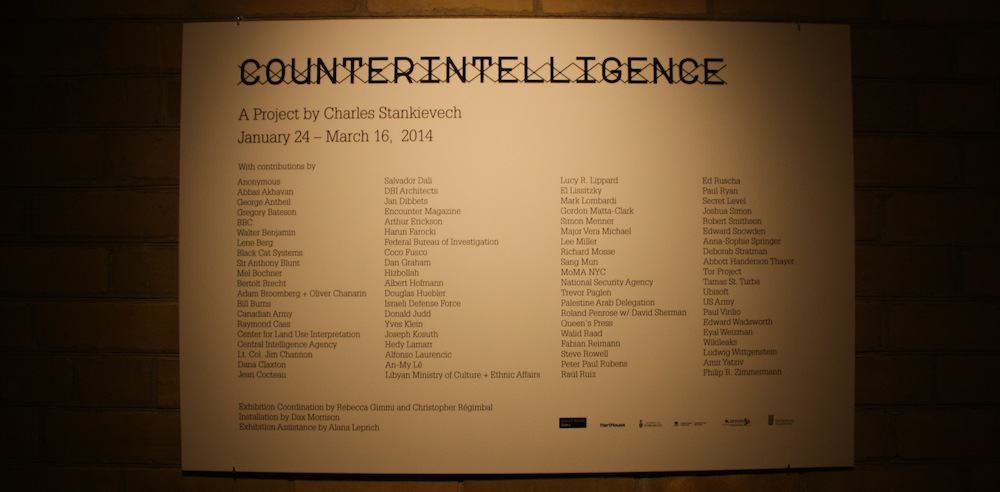Counterintelligence is a unique look at military intelligence communities through the visionary mind of Charles Stankievech. Currently showing at Hart House’s Justina M. Barnicke Gallery, Stankievech’s latest art exhibit is described as a contemplation on the “hidden gestures and strategic deceptions of a shadow world, covering a spectrum of work from historical military artifacts to contemporary artwork.” Stankievech is often classified as a conceptual artist, a description that certainly rings true after viewing his exhibit.
According to Stankievech, the concept he focuses on for the exhibit is the “secret of the double agent,” which is explored through a mixture of artifacts, videos, and recreations. The evening began with an hour-long introduction of the exhibit by Stankievech in the Music Room at Hart House, where he outlined the premise behind his work. Stankievech structured his preamble by going through most of the letters of the alphabet and connecting them with a key aspect of his exhibit. This ranged from “avant-garde” right down to “zone,” which referred to spaces like the Soviet Occupied Zone of the German Democratic Republic and the Korean Demilitarized Zone. For people unfamiliar with the terminology or concepts behind Counterintelligence, his introduction acted as a helpful primer for the ideas that would be crucial for understanding his exhibit.
Following Stankievech’s talk, everyone made their way over to the Barnicke Gallery, where his stunning creation was unveiled. In the description of the event, Stankievech notes that “appearances can be deceiving and surface meanings often misleading.” This was a crucial aspect of his exhibit, as many objects initially appeared banal before revealing an interesting tie-in to the theme of counterintelligence. This included an inconspicuous wristwatch that, upon further inspection, is revealed to be a dangerous piece of evidence used to send many individuals to Guantanamo Bay. Another example of this technique was echoed in Strankievech’s presentation of a Sesame Street recording, reported to be played on repeat to torture detainees.
The exhibition also featured provocative videos that were splashed across the walls to depict the harsh reality of war. While the exhibit opens up with a fictional representation of war through a clip from Call of Duty, it’s juxtaposed with another wall featuring real footage of Iraqi war correspondents for Reuters who killed by United States military’s AH-64 Apache helicopters in a 2007 Baghdad airstrike. Ultimately, Stankievech’s exhibit unearths a deep connection between the military and art. His examples of the avant-garde, camouflage and shadowing are just a sampling of the way he fuses art and counterintelligence tactics to create a thought provoking piece of work.


